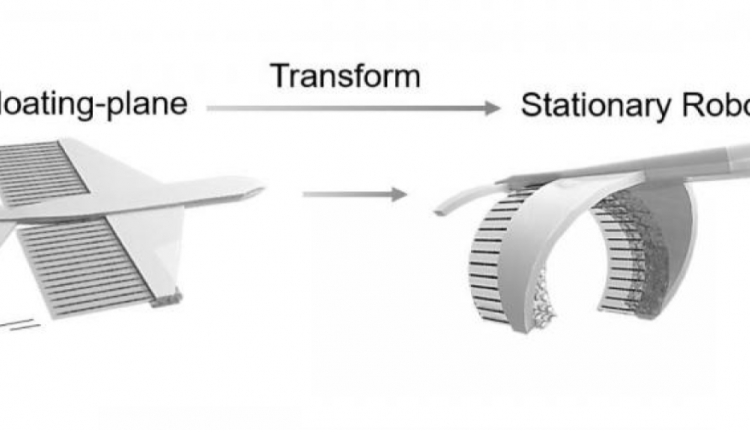
Biohybrid Robot Inspired by Transformers Mimics Living Organisms’ Shape-Shifting Properties
By Ruth Seeley
Living organisms’ ability to change shapes to perform specific actions was the inspiration for researchers at City University of Hong Kong and the Thayer School to develop a robot that swims through the bloodstream with a light-controlled cellular engine that performs highly-targeted drug delivery.
Just as hedgehogs defensively curl into balls, birds extend their wings to fly, and carnivorous plants open and close to trap food, robots designed to work inside the human body need to be adaptable to various conditions in order to be most effective. They need to be energy efficient and able to respond to different types of stimulus, like light or heat.
While examples of these types of robots already exist, researchers have struggled to create a device that fluently transforms its shape to allow it to start and stop moving on demand. Most existing systems also depend on temperature variations that are difficult to stimulate in the human body because of its nearly constant temperature.
But by combining cardiac tissue engineering, a 3D-printed wing structure and a light-sensitive gel, a soft robot with start-stop capability is possible. The switchable device transforms its shape when exposed to skin-penetrating near-infrared light, causing it to drive and brake through fluid environments like the human bloodstream.
The remote-controlled robot is driven by a tail fin that mimics the swimming action of whales. The structure was 3D printed in the shape of an airplane wing and then coated with heart muscle cells. In the same way that cardiomyocytes cause the heart to beat continuously, they also propel this biohybrid device through a constant undulating action.
To control the movement of the robot, researchers applied photosensitive hydrogels to the wings. In the absence of light, the wings deploy, allowing the heart cells to propel it forward. When exposed to light, the floating plane retracts its wings, causing it to stop.
“With this technology we can create soft transformable robots with unprecedented maneuverability,” said Zi Chen, an assistant professor of engineering at Thayer. “Our inspiration came from transformable toys that have different configurations and functionality. The result is no toy, it may literally change people’s lives. . . . “We literally dropped drug bombs on cancer cells. The realization of the transformable concept paves a pathway for potential development of next-generation intelligent biohybrid robotic systems.”
The robot’s high sensitivity to near-infrared light creates a response rate that allows an almost immediate transformation of wing shape, allowing it to be highly maneuverable. In the study, researchers used the “unprecedented controllability and responsiveness” of the floating-plane robot as a cargo carrier to conduct targeted drug delivery against cancer cells.
The biohybrid robot can be produced in a variety of sizes ranging from several millimeters to dozens of centimeters. Such scalability gives it good flexibility to take on tasks related to navigation and surveillance in difficult environments.
